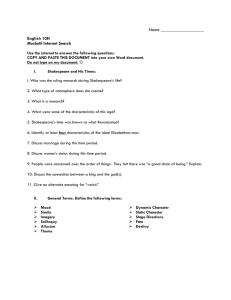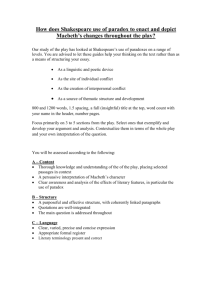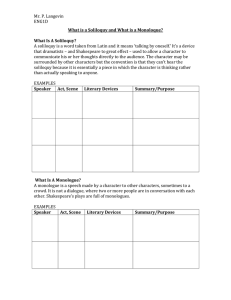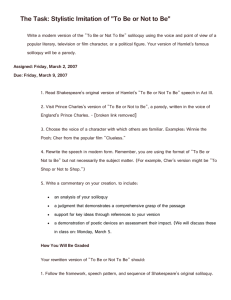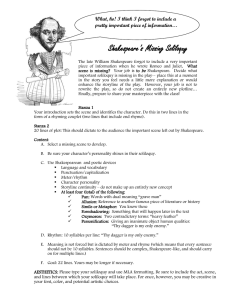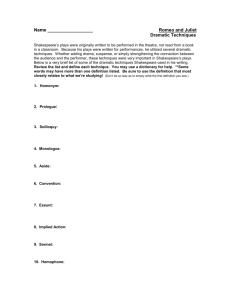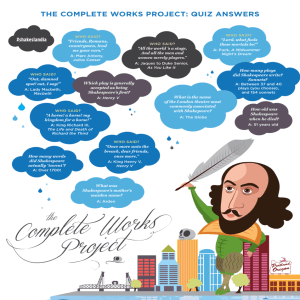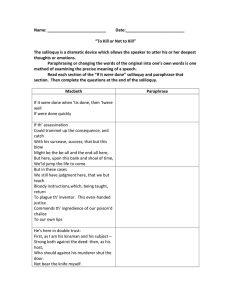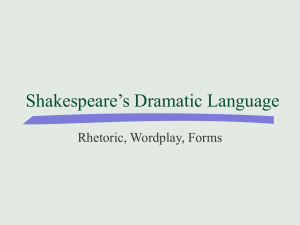Introduction to Shakespearean Drama
advertisement
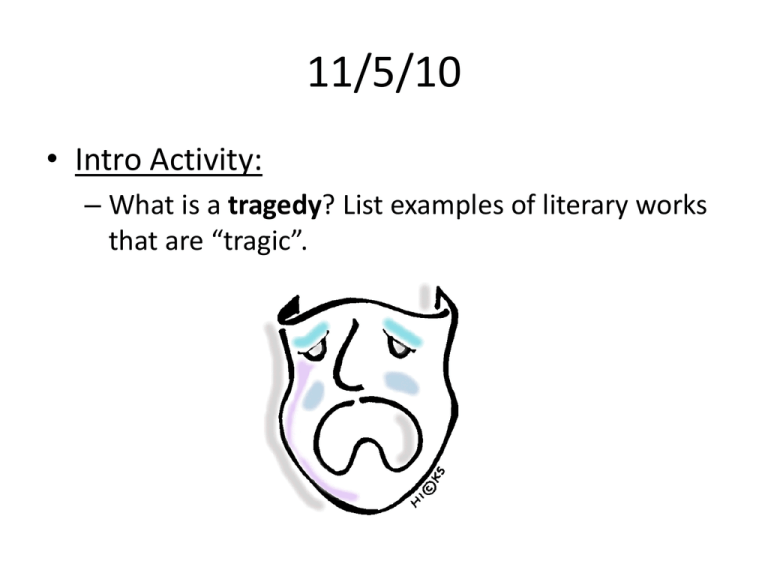
11/5/10 • Intro Activity: – What is a tragedy? List examples of literary works that are “tragic”. Introduction to Shakespearean Drama I. Life and Times A. William Shakespeare (1563-1616) 1. Wrote 37 plays (comedies, dramas, and histories) and 154 sonnets 2. Invented thousands of words and phrases B. The Age of Shakespeare 1. The reign of Queen Elizabeth I (1558-1603) saw England emerge as the leading world power 2. A rising merchant middle class carved out a productive livelihood, and the economy boomed II. Shakespeare’s Language A. Not Old English, not Middle English, but Early Modern English 1. A mix of the old and very new 2. Rural and urban words/images B. Understandable by the lowest peasant and the highest noble III. Theatrical Conventions A. Blood and the use of the supernatural B. Use of disguises and mistaken identities C. Multiple murders (in tragedies) D. Multiple marriages (in comedies) E. Use of asides, monologues, and soliloquies A. Aside – character speaks to the audience in a voice the other characters are unable to hear B. Monologue – a longer “speech” C. Soliloquy – a longer “speech” delivered by a character on stage alone Activity: Soliloquy Analysis In a soliloquy, a character, alone onstage, reveals his or her private thoughts and feelings as if thinking aloud. Directions: Read a soliloquy from William Shakespeare’s As You Like It and summarize it in your own words. IV. Introduction to Macbeth • In Macbeth, Shakespeare examines the lust for power and its consequences • Premise: Macbeth, a general in the king’s army, is told by witches that he will “be King hereafter.” • Setting: Scotland, in the 11th century V. Shakespearean Tragedy Structure Act III Act II Act I Act IV Act V
